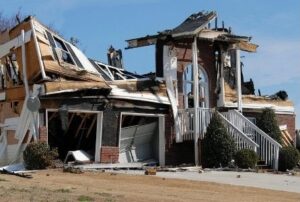Contents
Types of seismic codes used in the earth quake analysis in building design
Generally seismic load is also called as earth quake load. This load is comes under the type of lateral loading condition system. It will act perpendicular to the height of the building in two directions like X direction and Y direction. Depending upon the various location of the building in the world the seismic loading considerations are taken. The various types of seismic codes are available in the world for studying the intensity of seismic loads. From the results of intensity of seismic loads we can easily make earth quake resistant building with various retrofitting methods like bracing, shear walls, dampers, base isolation etc.

The complete concepts of retrofitting methods are explained in my previous blog post read with below specified link.
Different retrofitting methods used in building design
Various types of seismic codes used in the world
The following are the various different code books available in the world for studying the behavior of seismic loads
ASCE 7-16
The name of the ASCE-16 code is minimum design loads and associated criteria for building and other structures. This code was generally considered for the American standard provisions.
AS1170 2007
The name of the code is structural design actions, Part 4: Earth quake actions in Australia. This code book was frequently taken to the study the buildings which are located in Australia region.
Chinese 2010
The name of this book is code for seismic design of buildings which is considered generally as per the standards of Chinese code provisions.
Dominican R-001
Name of this code standard is Provisional recommendations for the seismic analysis of the structures.
EURO CODE8 2004
Design of structures for earth quake resistant part 1 is the general name for this standard code which is considered as per the standards of the euro countries provisions. The behavior of seismic loading parameters are taken initially from this code standard.
IS 1893: 2016
This code book was considered as per the standards of Indian standard system. The name of this code book is criteria for earthquake resistant design of structures. As per this code the seismic cones are classified into four types which are described below.
Zone II: This zone is called as low seismic zone which is having seismic coefficient factor is 0.10.
Zone III: This zone is called as medium seismic zone which is having seismic coefficient factor is 0.16.
Zone IV: This zone is called as high seismic zone which is having seismic coefficient factor is 0.24.
Zone V: This zone is called as critical seismic zone which is having seismic coefficient factor is 0.36.
Depending upon the seismic coefficient values the loading action will be more in the zone V than remaining zones like zone IV, zone III and zone II. The intensity of the seismic loading is also depends upon the soil conditions. The soil conditions in the Indian location are three types which are related to the loose soil, medium soil and hard or rock soil. If the structure is exists in the loose soil condition the effect of seismic forces action will be more and in the same process if the structure is exists in the hard or rock soil the intensity of seismic forces will be less.
KBC 2016
KBC 2016 code standard is considered as per the Korean system. The name code book is seismic forces for natural elements.
NBCC 2015
This code book is considered according to the standards of Canada region. The name of this code provision is considered as natural building code of Canada seismic hazard maps.
Italian NTC 2008
The NTC 2008 is considered for the region of Italy and the name of the code book is Italian new technology code for construction.
NZS 1170 2004
The New Zealand code for the seismic behavior study is NZS 1170 2004 and the name of the code is Structural design action, earth quake actions.
TCVN 9386: 2012
The code of the Vietnam is TCVN 9386: 2012 and the name of the code is Design of structures for earth quake resistance : part 1 general rules, seismic actions and rules for buildings
NEHRP 97
The name of the code NEHRP 97 is NEHRP guidelines for the seismic rehabilitation of buildings. This code was considered as per the American standard provisions.
Types of seismic codes and country details
The below table shows the various codes and countries and code name as per the seismic loading condition.
| S. No | Code Name | Country | Code Name |
| 1 | ASCE 7-16 | American | Minimum design loads and associated criteria for building and other structures |
| 2 | AS1170 2007
|
Australia | Structural design actions, Part 4: Earth quake actions in Australia |
| 3 | Chinese 2010 | China | code for seismic design of buildings |
| 4 | Dominican R-001 | Dominican | Provisional recommendations for the seismic analysis of the structures |
| 5 | EUROCODE8 2004
|
EURO | Design of structures for earth quake resistant part 1 |
| 6 | IS 1893: 2016 | India | Criteria for earthquake resistant design of structures |
| 7 | KBC 2016 | Korean | Seismic forces for natural elements |
| 8 | NBCC 2015
|
Canada | Natural building code of Canada seismic hazard maps |
| 9 | Italian NTC 2008 | Italy | Italian new technology code for construction |
| 10 | NZS 1170 2004 | New Zealand | Structural design action, earth quake actions |
| 11 | TCVN 9386: 2012 | Vietnam | Design of structures for earth quake resistance : part 1 general rules, seismic actions and rules for buildings |
| 12 | NEHRP 97 | America | NEHRP guidelines for the seismic rehabilitation of buildings |
Follow our previous five posts here
Types of beams and how to calculate the volume of the concrete required for the RCC beams
Combined footing design by staad pro software as per IS 456 code
Which brick blocks are best in wall construction red bricks or AAC blocks

Conclusions of different types of seismic codes considers in building design as per the country region
Well now the above explained concepts are related to the various code standards used in the seismic analysis as per the different countries in the world. The codes are classified in to 12 types related to the ASCE 7-16, AS1170 2007, Chinese 2010, Dominican R-001, EURO CODE8 2004, IS 1893: 2016, KBC 2016, NBCC 2015, Italian NTC 2008, NZS 1170 2004 , TCVN 9386: 2012 and finally NEHRP 97. Depending upon the various standards the seismic load is taken for different regions of countries.
For more information related to the civil engineering concepts and civil engineering updates follow my YouTube channel civil engineering by shravan.
Thanks for reading this article,
Your shravan,
Have a good day,